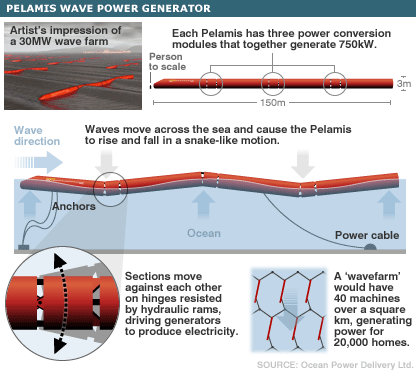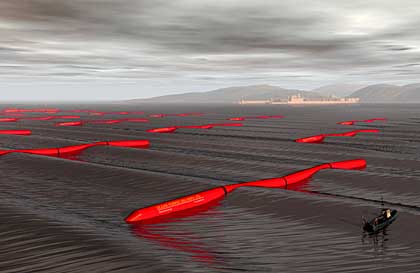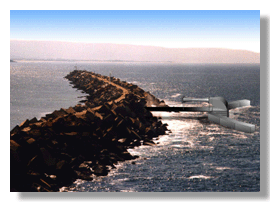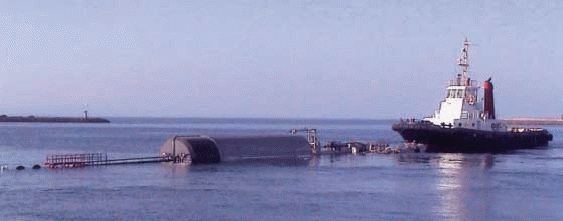
Wave power devices extract energy directly from surface waves or from pressure fluctuations below the surface. Renewable energy analysts believe there is enough energy in the ocean waves to provide up to 2 terawatts of electricity. (A terawatt is equal to a trillion watts.)
Wave power can't be harnessed everywhere. Wave-power rich areas of the world include the western coasts of Scotland, northern Canada, southern Africa, Australia, and the northeastern and northwestern coasts of the United States. In the Pacific Northwest alone, it's feasible that wave energy could produce 40–70 kilowatts (kW) per meter (3.3 feet) of western coastline. The West Coast of the United States is more than a 1,000 miles long


Wave energy will have a small breakthrough in the next few months when the three Pelamis machines will be deployed in the ocean off the Portuguese coast this spring. And there are further near-term projects in the works for England, Scotland and Spain
B1_b3_1
WAVE POWER IN AUSTRALIA
Ocean waves represent the most concentrated form of renewable energy and abundant resources are available around Australia's lengthy coastline ~ the energy density of surface waves can average 40 megawatts per kilometre of coastline
A shoreline device that uses about 40 metres of coastline, the
Energetech Wave Energy System is suitable for fairly deep water, as
well as coastal sites such as harbour breakwaters, rocky headlands
and cliffs.
shoreline device that uses about 40 metres of coastline, the
Energetech Wave Energy System is suitable for fairly deep water, as
well as coastal sites such as harbour breakwaters, rocky headlands
and cliffs.
The prototype will produce electricity at around 15 cents per kWh; however, estimates of second-generation devices put production at between 5 and 16 cents per kWh depending on the local wave climate.
This makes it as economical as wind power and cheaper than most forms of solar power. Many remote locations and island communities currently pay up to 60 cents per kWh for electricity derived from diesel.
Wave power also has enormous benefits for greenhouse gas reduction. The demonstration project itself will have sufficient power to service the requirements of around 150 households. With the support of the Port Kembla Port Corporation and the Wollongong City Council, preparations for the installation of the first generator are well under way. The system will have a peak capacity of 500kW and will save around 1,000 tonnes of greenhouse gas annually.
Energetech thinks that with Australia's competitive advantage in the industry in the medium term, there is huge export potential for sales of up to A$5 billion per annum on the world market.
As it is based around a number of existing proven technologies such as ocean buoys, marine-quality hydraulics and conventional moorings, the unit is estimated to have a useful life of at least 30 years.
The projections indicate that within a decade wave energy devices could be globally producing the equivalent of 270,000MWh per annum of power, which would have a profound impact on total worldwide greenhouse emissions.

Tug placing the wave generator in location
B1_b3_2